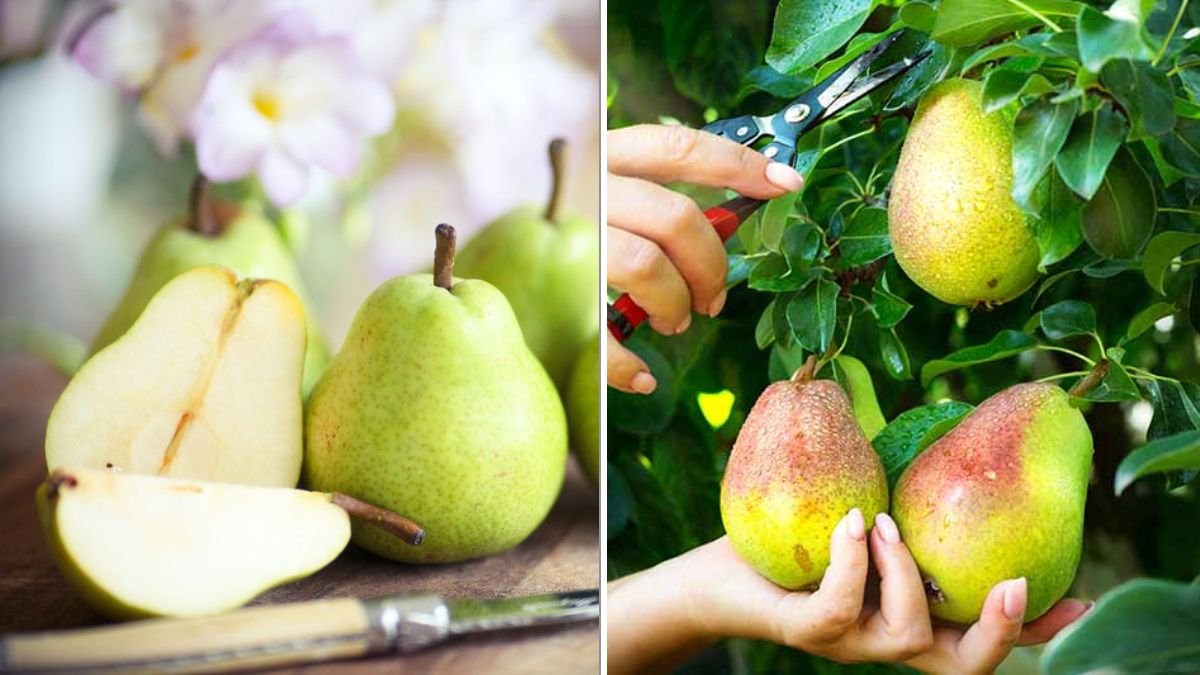There’s something magical about a row of tall, golden sunflowers standing proudly under the summer sky. They turn their sunny faces toward the light, bringing warmth, color, and joy to any garden. But if you’ve ever grown them before, you might know the frustration of watching those cheerful blooms topple over just when they’re at their most beautiful.
Whether they’re leaning under the weight of their giant heads or collapsing after a summer storm, floppy sunflowers are one of the most common garden woes. Luckily, with a little know-how, you can grow sturdy, upright sunflowers that stay tall and strong all season long.
Here’s a detailed guide on how to grow sunflowers that don’t fall over—from the moment you sow the seeds to the day you harvest the blooms.
1. Choose the Right Variety
Not all sunflowers are created equal. Some are bred to tower over ten feet tall with heavy heads that naturally droop, while others are compact and more stable. If you’re tired of sunflowers that flop, your first step is choosing the right variety.
Best sturdy sunflower varieties:
- ‘Autumn Beauty’ – Multi-branching with medium-sized heads and strong stems.
- ‘Lemon Queen’ – Grows 5–7 feet tall with graceful, upright blooms.
- ‘Sunrich Orange’ – Known for its thick stems and florist-quality blooms.
- ‘Teddy Bear’ – A compact dwarf variety (2–3 feet) perfect for containers.
- ‘Soraya’ – The first sunflower to win the All-America Selections award; excellent branching and stem strength.
Pro tip: Avoid ultra-tall “giant” varieties like ‘Mammoth Russian’ if your garden is windy or your soil is loose. Taller plants with massive flower heads are naturally more top-heavy.
2. Pick the Perfect Location

Sunflowers live up to their name—they need at least 6–8 hours of full sun daily to grow strong. But light isn’t the only factor that affects stability.
Here’s what your planting site should offer:
- Shelter from strong winds: A fence, hedge, or building nearby can reduce wind damage without blocking sunlight.
- Well-draining soil: Avoid spots that stay soggy after rain. Wet soil weakens roots and makes plants more likely to topple.
- Loamy or sandy texture: Heavy clay soil can restrict root growth. If that’s your only option, amend it with compost or organic matter to loosen it up.
Tip: Sunflowers align themselves toward the sun during their early growth stages. Plant them so that when they lean slightly eastward, they won’t shade out other plants in your garden.
3. Start With Deep, Strong Roots
The secret to sunflowers that don’t fall over starts underground. Strong roots anchor tall stems, and healthy soil gives those roots room to spread.
How to plant for strong roots:
- Sow seeds directly in the ground rather than starting them in pots. Sunflowers dislike transplanting because it disturbs their deep taproots.
- Plant seeds 1 inch deep and 6–12 inches apart (depending on the variety).
- Thin seedlings once they’re about 6 inches tall, keeping the strongest one in each spot. Crowded plants grow tall and spindly, making them more likely to fall.
- Loosen soil at least 12 inches deep before planting to encourage the taproot to grow straight down.
Pro tip: Add a light layer of compost or aged manure to the soil before planting for a nutrient-rich start.
4. Strengthen the Stems Naturally

Sunflowers that grow too fast often develop thin, weak stems that can’t support their heavy heads later. To prevent this, encourage steady, balanced growth rather than rapid stretching.
Here’s how:
- Provide consistent sunlight. Shaded plants stretch toward the light and become top-heavy.
- Avoid over-fertilizing. Too much nitrogen causes lush leaf growth but weak stems.
- Use compost instead of chemical fertilizer. It releases nutrients slowly, encouraging sturdy development.
- Space plants properly. Give tall varieties 18–24 inches between each plant. Crowded conditions make them compete for light, leading to thin, weak stalks.
Bonus tip: A gentle breeze helps strengthen sunflower stems naturally. If your garden is sheltered, you can occasionally brush your hand gently along young plants to simulate wind and promote sturdier growth.
5. Support Tall Varieties Early
If you’re growing giant sunflowers or live in a windy area, staking is essential. The best time to add support is when the plants are still small—before they start to lean.
How to stake sunflowers:
- Drive a sturdy bamboo stake or wooden pole 6–12 inches into the soil, about 2 inches away from the stem.
- As the plant grows, loosely tie it to the stake using soft twine or garden tape. Avoid tight knots that can damage the stem.
- Add additional ties every 12 inches as the plant gets taller.
- For multiple sunflowers in a row, use garden netting or a horizontal trellis as support.
Pro tip: Drive the stake deeply enough (at least 1 foot into the soil) so it won’t pull out in a storm.
6. Water Deeply—But Not Too Often

Water plays a huge role in sunflower stability. Shallow watering encourages shallow roots, which can’t anchor tall plants.
How to water for strong roots:
- Water deeply once or twice a week rather than frequent light sprinklings.
- Let the soil dry slightly between waterings.
- Direct water to the base of the plant, not the leaves.
- During hot, dry spells, give your sunflowers a thorough soak—about 1 to 1.5 inches of water per week.
Warning: Avoid overwatering. Constantly wet soil softens the ground, making it easier for plants to topple over after heavy rain or wind.
7. Feed for Strength, Not Height
Fertilizer can be a double-edged sword for sunflowers. Too much can make them grow tall and fast—but also weak and floppy.
Fertilizer tips:
- Use a balanced or low-nitrogen fertilizer (something like 5-10-10).
- Apply once when the plant is about 12 inches tall, and again before flowering.
- Always water after fertilizing to prevent root burn.
If your sunflowers are growing in nutrient-rich soil, you might not need additional fertilizer at all. Remember: the goal is sturdy growth, not maximum height.
8. Protect Against Wind and Rain

Even the strongest sunflower can struggle after a violent summer storm. Heavy rain softens the soil, and wind puts pressure on tall stems and top-heavy blooms.
Here’s how to protect your plants from the elements:
- Mulch around the base with straw or wood chips to help the soil retain structure and prevent erosion.
- Stake tall plants before storms if you haven’t already.
- Plant in rows rather than isolated singles. Groups of sunflowers help support each other.
- After storms, gently straighten any leaning plants and re-tie them to stakes if needed.
Tip: Avoid watering right before a storm—wet soil increases the risk of root instability.
9. Prune and Deadhead for Balance
Deadheading (removing spent blooms) doesn’t just keep your sunflowers looking neat—it can also help prevent toppling. When large, drying flower heads get heavy, they can pull the entire stem down.
What to do:
- As flowers fade, cut them off just below the bloom.
- Leave some heads to mature if you plan to harvest seeds.
- For branching varieties, pruning spent flowers encourages more side blooms, distributing weight evenly.
10. Harvest at the Right Time

If you’re growing sunflowers for seeds, timing your harvest correctly is key to preventing bent or broken stems.
As seed heads mature, they become heavy, especially when filled with ripening seeds or after rain.
How to harvest without collapse:
- Once the flower head turns yellow and begins to droop, it’s ready for harvest.
- Cut the head off with 12–18 inches of stem attached.
- Hang it upside down in a dry, airy place to finish drying.
This prevents the plant from collapsing under the weight of its own seeds while ensuring you still get a perfect harvest.
.
Common Mistakes That Cause Sunflowers to Fall Over
Avoid these pitfalls if you want strong, upright blooms:
Planting in soft, wet soil.
Overcrowding seedlings (they stretch for light).
Over-fertilizing with nitrogen-rich food.
Forgetting to stake tall varieties early.
Watering too often or too shallowly.
Each of these weakens root or stem structure, leaving plants vulnerable when the wind blows or flower heads get heavy.
Final Thoughts
Growing sunflowers that don’t fall over isn’t about luck—it’s about balance. Strong roots, sturdy stems, proper spacing, and mindful watering all work together to keep your plants upright and thriving.
The best part? Once you master these steps, you’ll have sunflowers that not only stand tall but stand out—bright, healthy, and full of life from the first bud to the last golden bloom.
So this season, choose wisely, plant deeply, water thoughtfully, and give your sunflowers a little support along the way. In return, they’ll reward you with a garden that radiates sunshine—without a single fallen flower.






Leave A Comment